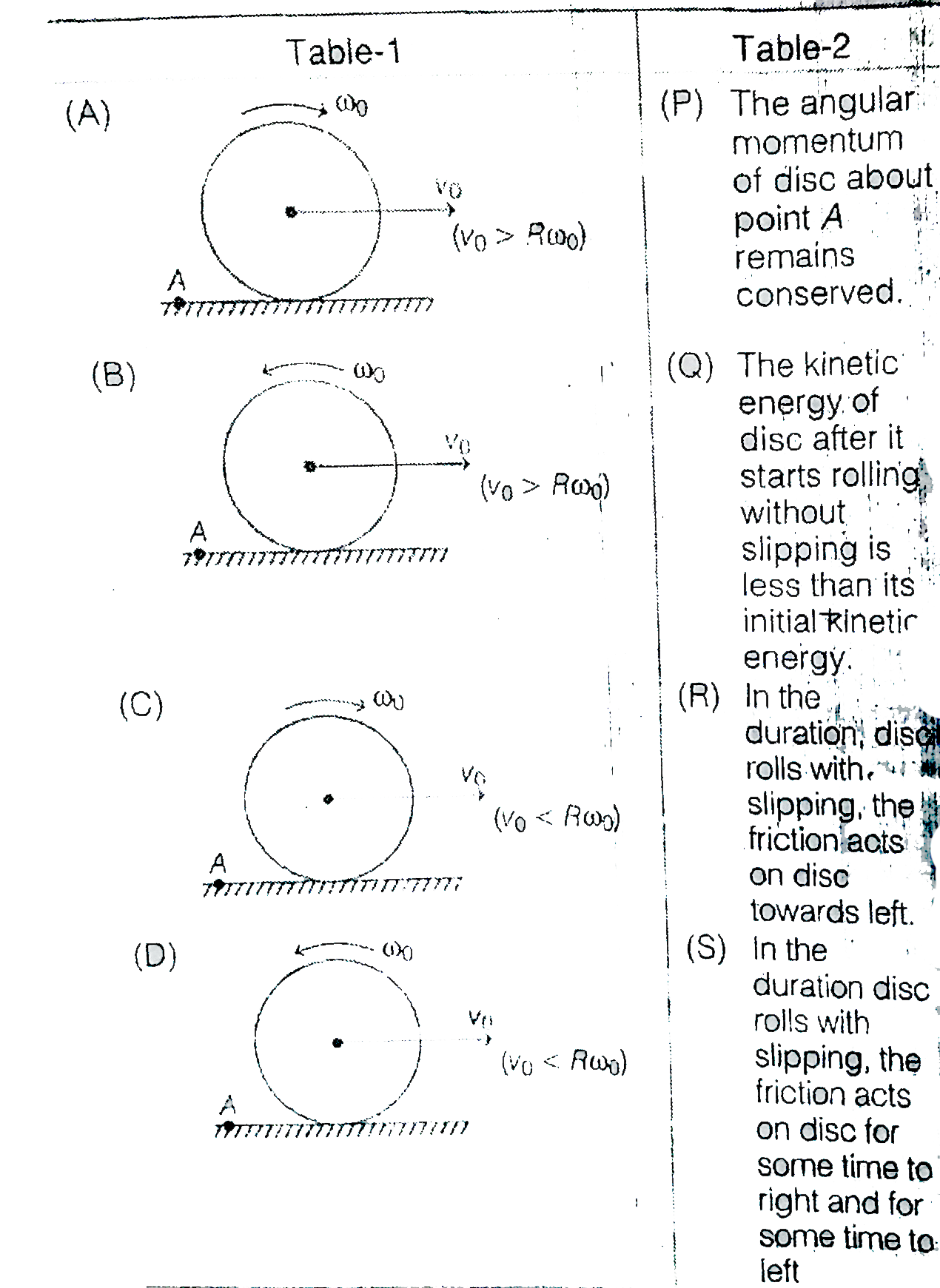A solid sphere hollow sphere disc, ring and hollow cylinder are relased from the top of a fixed inclined when all of them have same mass and radius

Step by step video & image solution for A solid sphere hollow sphere disc, ring and hollow cylinder are relased from the top of a fixed inclined when all of them have same mass and radius by Physics experts to help you in doubts & scoring excellent marks in Class 12 exams.
Updated on:21/07/2023Topper's Solved these Questions
- SYSTEM OF PARTICLES AND ROTATIONAL MOTIONBOOK - AAKASH INSTITUTE ENGLISHCHAPTER - SYSTEM OF PARTICLES AND ROTATIONAL MOTIONEXERCISE - Assignment (Section - G) Integar Type Questions
10 Videos
- SYSTEM OF PARTICLES AND ROTATIONAL MOTIONBOOK - AAKASH INSTITUTE ENGLISHCHAPTER - SYSTEM OF PARTICLES AND ROTATIONAL MOTIONEXERCISE - Assignment (Section - H) Multiple True-False Type Questions
4 Videos
- SYSTEM OF PARTICLES AND ROTATIONAL MOTIONBOOK - AAKASH INSTITUTE ENGLISHCHAPTER - SYSTEM OF PARTICLES AND ROTATIONAL MOTIONEXERCISE - Assignment (Section - E) Assertion-Reason Type Questions
12 Videos
- SEMICONDUCTOR ELECTRONICS: MATERIALS, DEVICES AND SIMPLE CIRCUITSBOOK - AAKASH INSTITUTE ENGLISHCHAPTER - SEMICONDUCTOR ELECTRONICS: MATERIALS, DEVICES AND SIMPLE CIRCUITSEXERCISE - Assignment (Section-D (Assertion and reason))
5 Videos
- TEST 1BOOK - AAKASH INSTITUTE ENGLISHCHAPTER - TEST 1EXERCISE - EXERCISE
21 Videos
Similar Questions
Statement 1: A solid sphere and a hollow sphere of same radius and same material are released (at rest ) from the top of a fixed inclined plane at the same time. They will reach the bottom simultaneously, if they roll with sliding.
Statement 2: In the situation of statement 1, the centres of both spheres have the same acceleration and they travel the same distance. Hence time taken is same.
View SolutionA solid sphere, a hollow sphere, a solid disc and a hollow cylinder are allowed to roll down a sufficiently rough inclined plane starting from rest. All have same mass and radius.

View SolutionA solid and a hollow sphere are released from the top of a sufficiently rough inclined plane. The solid sphere has same mass but its radius is half of the radius of hollow sphere. Both are performing pure rolling Which of the following statements is correct regarding their kinetic energy when they reach at the bottom of plane? (K = Kinetic energy)
View SolutionA solid sphere, a hollow sphere and a ring are released from top of an inclined plane (frictionsless) so that they slide down the plane. Then maximum acceleration down the plane is for (no rolling) :
View SolutionA solid sphere and a hollow sphere of same mass M and same radius R are released from the top of a rough inclined plane. Friction coefficient is same for both the bodies. If both bodies perform imperfect rolling, then
Statement - 1 : Work done by friction for the motion of bodies from top of incline to the bottom will be same for both the bodies.
Statement - 2 : Force of friction will be same for both the bodies.
View SolutionA solid sphere, a hollow sphere and a disc, all having the same mass and radius, are placed at the top of an incline and released. The friction coefficients between the objects and the incline are same and not sufficient to allow pure rolling. The least time will be taken in reaching the bottom by
View SolutionA ring, a solid cylinder, a hollow sphere and a solid sphere are released from rest on an inclined plane from same level. If there is no slipping then which one of these will reach the ground at last?
View SolutionA solid sphere, a hollow sphere and a disc, all having the same mass and radius, are placed at the top of an incline and released. The friction coefficients between the objects and the incline are same and not sufficient to allow pure rolling. The least time will be taken in reaching the bottom by
View SolutionA solid sphere, disc and solid cylinder, all of the same mass, are allowed to roll down (from rest) on inclined plane, them
View SolutionA solid sphere and a hollow sphere of the same material and of equal radii are heated to the same temperature
View Solution
